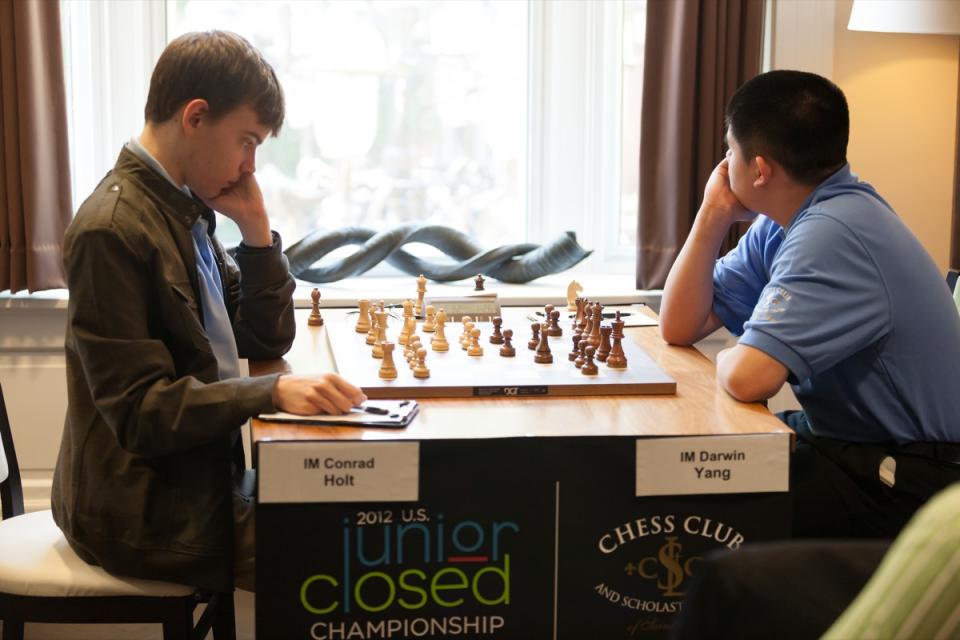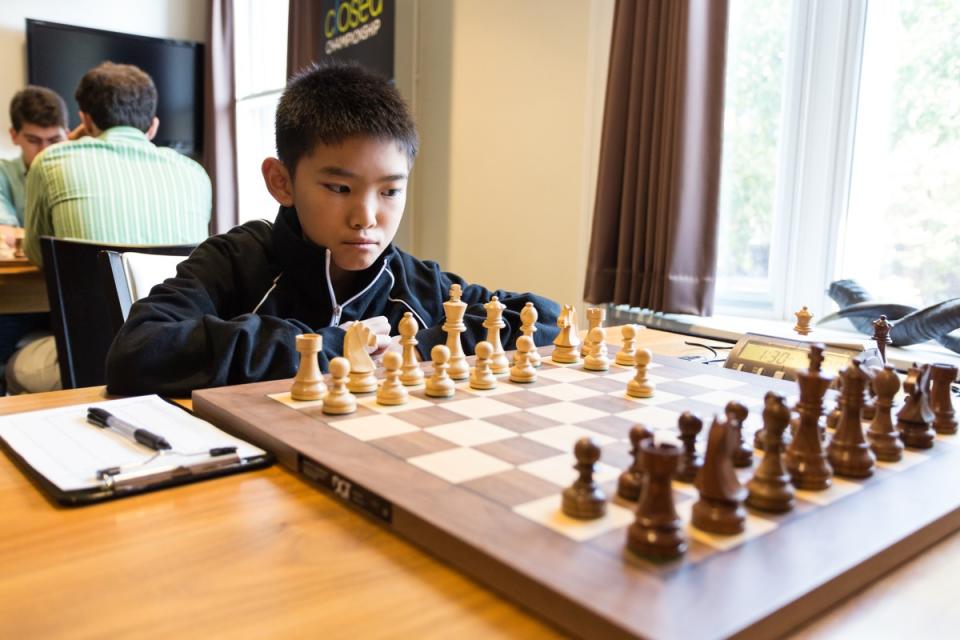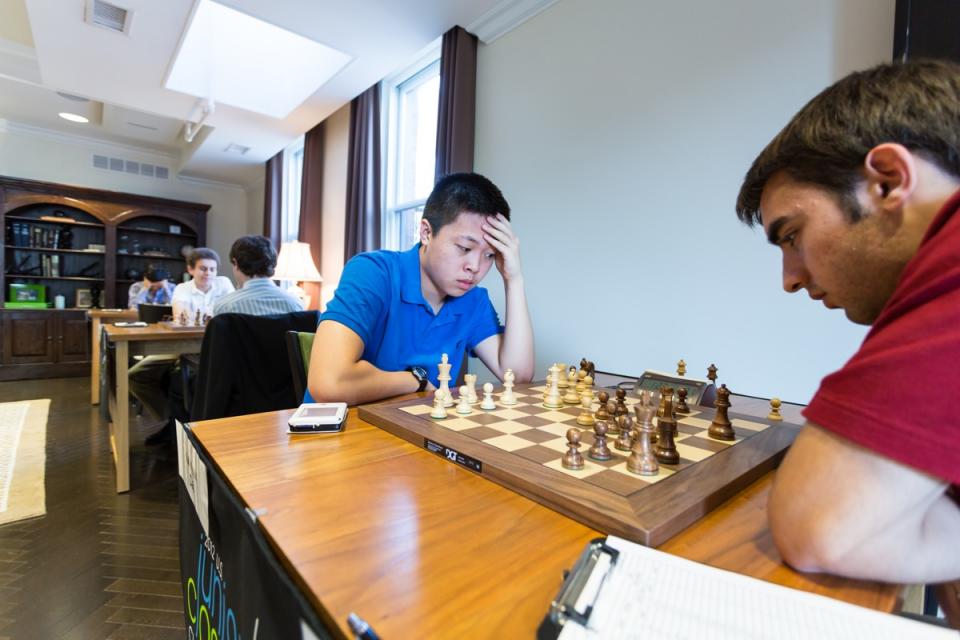U.S. Junior Closed Championship Begins, Getz Leads A-Group

The 2012 U.S. Junior Closed Championship began yesterday with exciting games, excellent analysis by the commentators and a spectacular will to win amongst all competitors. After two rounds, FM Alec Getz leads group A, and there is a four-way tie for first in group B. Round one began promptly at 11 a.m. with an exciting matchup between the top-two seeds in the A-group, IM Conrad Holt and IM Darwin Yang.
The Classical Nimzo Indian was on the menu, and the players quickly reached a blocked position that seemed destined for a draw. However, after careful maneuvering and patient play, Holt traded to an endgame with two bishops versus two corralled knights. Demonstrating his excellent technique, Holt pressured the kingside, leaving Yang in zugzwang – unable to move a single piece without conceding more ground. Yang capitulated after 79 moves.
It was obvious from the start that each player had the focused determination necessary to win such a strong tournament, demonstrated by the fact that all games but one were decisive. Even the draw between Eric Rosen of Chicago and Kayden Troff of West Jordan, Utah was a nail-biting affair; Troff reached a pawn-up endgame after 25 moves but went astray just before time control, sacrificing a bishop to open lines against Rosen’s king. Sharing the pressure of the clock, Rosen failed to capitalize on his advantage and the game was drawn after 66 moves.
 Round two saw similar excitement. At 11 years old, FM Jeffrey Xiong is the youngest competitor in the tournament, but was able to show some real chess maturity in his game versus top-seed IM Conrad Holt. Xiong, playing with the white pieces, transposed into a Caro Kann - Panov Attack and cruised to an easy draw. Perhaps one of the most useful themes to study in chess is how to play either side of an Isolated Queen Pawn position, and it was clear that Xiong is well-learned in such positions.
Round two saw similar excitement. At 11 years old, FM Jeffrey Xiong is the youngest competitor in the tournament, but was able to show some real chess maturity in his game versus top-seed IM Conrad Holt. Xiong, playing with the white pieces, transposed into a Caro Kann - Panov Attack and cruised to an easy draw. Perhaps one of the most useful themes to study in chess is how to play either side of an Isolated Queen Pawn position, and it was clear that Xiong is well-learned in such positions.
The longest game in round two was National Master Robert Perez of Texas against fellow NM Raven Sturt of New York. It was a back-and-forth battle with winning chances for both sides. After the game Sturt said he was in big trouble at some point, but fought hard to hold the draw. In fact, Perez had a winning advantage around move 82, but queen endgames are notoriously difficult, and with little time, he was unable to see the winning line. With 90. a7, Perez was no longer able to stop the perpetual check and the game ended in a draw after 112 moves.
 Local master Kevin Cao racked a point on the scoreboard by defeating Eric Rosen in round two. After a sharp Taimanov Sicilian, white’s initiative had all but disappeared until Rosen blundered with 27. e5. Despite a sizeable advantage, Cao seemed to go astray and the position was roughly equal just before time control. However, Rosen made the final mistake on move 40 and Kevin coast to victory on move 71.
Local master Kevin Cao racked a point on the scoreboard by defeating Eric Rosen in round two. After a sharp Taimanov Sicilian, white’s initiative had all but disappeared until Rosen blundered with 27. e5. Despite a sizeable advantage, Cao seemed to go astray and the position was roughly equal just before time control. However, Rosen made the final mistake on move 40 and Kevin coast to victory on move 71.
Round two also saw a matchup between the highest-rated players in the B-group, IM Daniel Naroditsky and IM Marc Arnold. After an irregular opening, the players reached an unclear position at move 31 and agreed to a draw. After the game, Arnold commented that he was lucky to have 30. Ne4, or else his position would be dreadful.
As always, GM Ben Finegold, who won the Junior Closed Championship in 1989, and FM Aviv Friedman, coach to many top juniors at international events, did an excellent job with commentary. Their clear analysis and witty repartee elated spectators in the club and around the world via the internet. Finegold agreed that the number of decisive games is testament to the fighting spirit and youthful energy within the field. Tune in every day, starting at 11am to follow the action live at uschesschamps.com.
